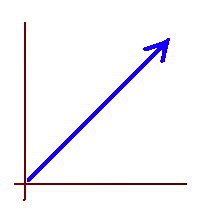A few sources of confusion to be aware of.
Sometimes I see students who used to get good grades in their Algebra classes but who are now struggling with Calculus.
They tell me they are confused by Calculus; they do not know when to apply the Chain Rule; they get uncomfortable around dx; they have no clue how to start the problems, and so on and so forth.
What most amazes them is they know they had no problems with Algebra, they understood Algebra well; so the question in their mind is: “What is it about Calculus that makes it so difficult?”
One problem is their implicit, non-accurate expectations. Sometimes they think they are doing something wrong because they have not gotten to the solution yet, after filling in one page with equations. However, they may very well be on the right track. They are not doing anything wrong. They just never expected for the solution to take so much work, and time. They were expecting to arrive to the solution after three or four steps, like they used to do in their Algebra work. Instead, with Calculus problems they may need to go through ten or twelve similar steps.
Sometimes they ask:
“Another integral? You mean, this is not the result yet?”
Apparently they cannot believe it. I tell them:
“Look, we have to keep going. We are not there yet but we are getting close. O.K.? Think of this as a little marathon. You were used to run the 400 meters, now we are going for three miles. We just have to keep going.”
Another feature that makes Calculus harder than Algebra is the huge number of options when it comes to selecting routes to the solution, many of which may turn to be dead-ends. Calculus incorporates all the operations of Algebra, including exponents, roots, and logarithms; plus all trigonometric functions; and it makes heavy use of function composition. All these ingredients can be thrown into a problem involving limits, or derivatives, or integrals. So Calculus really pushes you to get your Algebra up to speed. And because the expressions get more complex, there are more forks in the road at almost every step of the way. This is confusing for many students.
Now, in my opinion, the major source of discomfort when doing the transition from Algebra to Calculus, is that students who like Algebra like also order, and neatness. This proves to be a disadvantage when it comes to acquiring an intuition for Calculus.
They tell me:
“I do not know what to do, where to start, when to apply what rule, none of that! In Algebra everything was more clear, more precise.”
I ask them:
“And you liked that, didn’t you? Having a set procedure to follow in an orderly manner, right?”
They say:
“Yes!”
Then I say something like:
“Well, I hate to break the news to you but when it comes to Calculus, you are out there in the wild, and everything is moving, all the time, even if it does not seem that way. You have to get used to it.”
Many times they ask:
“But, why? Why is it that way?”
My explanation goes more or less like this:
“Well, Calculus was invented to deal with problems of a very physical nature: motion, volume, pressure, speed, weight, and the like, but not only that. The specific aim of Calculus was to provide answers as to how those physical magnitudes behave when they are changing, either growing or going down, and being related to each other at the same time. Originally, everything in Calculus happens in time, nothing stays the same, everything is changing, moving, decreasing, growing, building up, fading away, speeding up, slowing down, just like in the real world. So when you think of a variable x or y or v in Calculus, it is not just a number that is there, with some fixed value, but a number that wants to go somewhere else, a number that has already started to change, even if only a little tiny bit”
Somehow this bizarre wording paints a picture that makes sense for them, in that it puts their confusion into the proper perspective, eliminating a big part of it.
One of my students, after hearing this type of explanation, said:
“Oh! So, dx is the sneakiness of change! That’s why I don’t like it! But now I know I have to deal with it. I cannot just pretend it’s not there.”
And I said:
“That is exactly right. That is exactly what it is.”
Then she said:
“And, we always have to apply the Chain Rule, we cannot get rid of it, because the variables are connected to each other.”
And I said:
“Yes, the Chain Rule is always there.”
It is a big help to be able to tell students at least some of the reasons why they are confused, because when they do not even know the source of their confusion, everything gets exponentially more confusing for them.
Golden iteration
-
The expression converges to the golden ratio φ. Another way to say this is
that the sequence defined by x0 = 1 and for n > 0 converges to φ. This post
wi...
1 day ago




